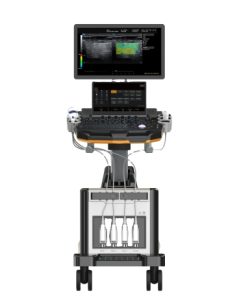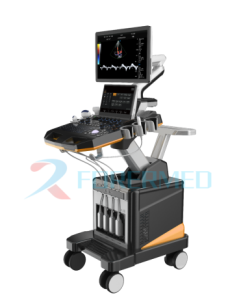Contrast-Enhanced Ultrasound Imaging: Enhancing Diagnostic Capabilities
Introduction:
Contrast-enhanced ultrasound (CEUS) imaging is a powerful diagnostic tool that utilizes ultrasound waves in combination with contrast agents to enhance the visualization and characterization of various organs and lesions. This article explores the functionalities of contrast-enhanced ultrasound imaging and highlights its significance in clinical practice, offering insights into this advanced imaging technique.
-
Principles of Contrast-Enhanced Ultrasound Imaging:
Contrast-enhanced ultrasound imaging involves the injection of microbubble-based contrast agents into the bloodstream. These microbubbles resonate in response to ultrasound waves, producing strong echoes that enhance the imaging signal. By analyzing the behavior of these contrast agents within tissues and blood vessels, CEUS provides valuable information about perfusion, vascularization, and tissue characteristics. -
Improved Visualization of Vascular Structures:
CEUS enables improved visualization of vascular structures, including arteries, veins, and capillaries. By tracking the passage of contrast agents through these vessels in real time, it provides dynamic information about blood flow patterns, highlighting areas of stenosis, thrombosis, or abnormal vessel formations. This helps in the diagnosis and management of conditions such as peripheral arterial disease, liver cirrhosis, and tumors. -
Characterization of Solid Organ Lesions:
CEUS plays a crucial role in the characterization of solid organ lesions, such as liver tumors, renal masses, and pancreatic lesions. The contrast agents accumulate in these lesions, allowing for detailed analysis of their vascularity, perfusion patterns, and tissue characteristics. This information assists in differentiating between benign and malignant lesions, guiding treatment decisions, and monitoring treatment response. -
Assessment of Cardiac Perfusion and Function:
CEUS offers valuable insights into cardiac perfusion and function. It allows for the assessment of myocardial perfusion, aiding in the diagnosis of conditions such as coronary artery disease and myocardial ischemia. CEUS can also evaluate the contractility of the heart muscle, assisting in the detection and characterization of cardiac abnormalities, including myocardial infarction and cardiomyopathies. -
Advantages and Considerations:
CEUS has several advantages over other imaging modalities. It is non-invasive, does not involve ionizing radiation, and has no known nephrotoxicity. It provides real-time imaging, allowing for dynamic assessment. However, it is operator-dependent, and the availability of contrast agents may vary. Furthermore, special attention must be given to patient safety, appropriate contrast agent selection, and contraindications.
Conclusion:
Contrast-enhanced ultrasound imaging represents a significant advancement in diagnostic imaging. By leveraging the unique properties of microbubble-based contrast agents, CEUS enhances the visualization and characterization of various organs and lesions. Its applications in vascular imaging, lesion characterization, and cardiac assessment contribute to improved diagnostic accuracy, treatment planning, and patient outcomes. As technology continues to evolve, contrast-enhanced ultrasound imaging holds great promise for further advancements in clinical practice.



